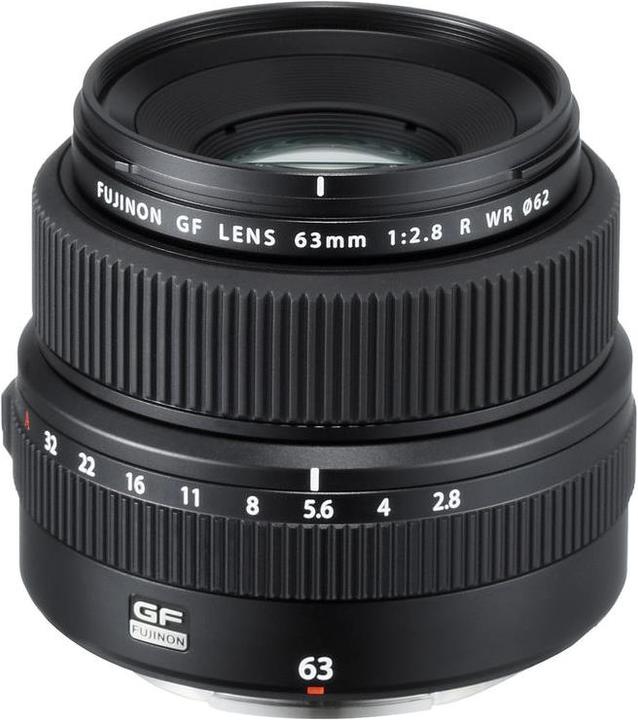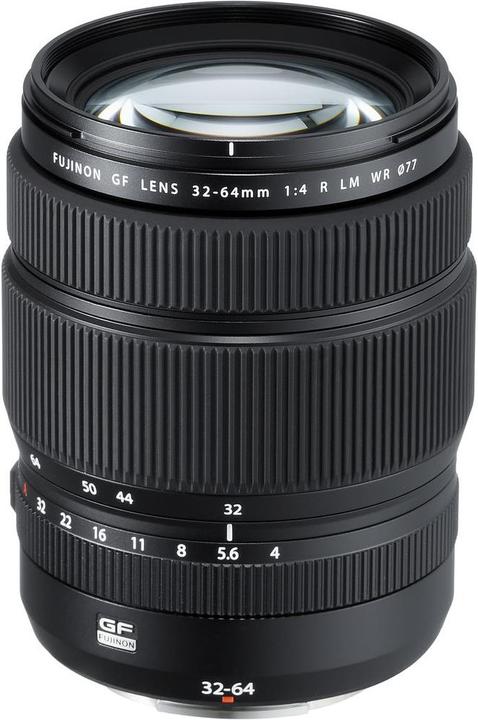

Tried out: the Fujifilm GFX 50s digital medium format camera
There is nothing at all medium about a medium format camera. Neither the quality nor the size, and unfortunately not the price either. After trying it out for a few hours, I realise: medium format is big. Very big.
I was allowed to try out a digital medium format camera for a short time. It's not something you get your hands on every day, even as a photo editor, so I'd like to record my impressions here.
Specifically, it's the Fujifilm GFX 50s and the following two lenses:
What is a medium format camera anyway?
Medium-format cameras have a very large photo sensor, even larger than full-frame cameras. So why "medium"? The term dates back to analogue times, when the full format was called 35 mm format. In the days of film photography, larger formats were generally used than in the chip age.
While the small or full format is quite precisely defined (36 x 24 mm), medium format can be anything between four and ten centimetres in length. In the case of Fujifilm, the sensor is 43.8 x 32.9 mm.
A larger sensor generally leads to a higher light sensitivity, i.e. less image noise at high ISO values and a higher dynamic range. This means that greater differences in brightness can be depicted correctly. However, a large sensor also leads to large cameras and lenses. Telephoto lenses in particular become real monsters.
Hello GFX
Let's go! Product Manager Denny Phan hauls what looks like a handyman's kit. Something similar to this, only bigger.
This doesn't bode well for me in terms of the size and weight of the camera. But two large compartments in the case are empty, and it's actually not all that bad. The camera body is no bigger than that of a full-frame camera. I realise this when I place the Canon EOS 5D from editorial colleague Ramon next to it. You can compare the proportions yourself on the camerasize.com site.

Without the lens, the Fujifilm GFX 50s is even lighter than the full-frame camera. However, the lenses are of a different calibre. Even the simple fixed focal length standard lens has a diameter of 8.4 cm and a weight of 410 grams. The wide-angle zoom lens, which I can also try out, is significantly larger and heavier. So far there is no powerful telephoto lens for this system. Perhaps that's for the best.
The Fujifilm camera is mirrorless. This is probably the reason why it is relatively compact compared to the sensor size. The electronic viewfinder can be removed. Then the camera looks almost cosy. A cute little sledgehammer.

First walk
In the beginning, I thought it would be best to save everything in RAW and JPEG. After all, I want to get the maximum out of it if I'm going to try out a medium format camera. However, with my not particularly fast memory card, saving each photo took several seconds. A RAW image on this camera is easily over 50 MB in size. I changed the setting to JPEG and - something I never do - to medium quality. Even then, individual images were still over 20 MB in size.
On the day I had time to test the camera, the Swiss Plateau was once again covered in a blanket of dark grey fog. I went for a walk. I didn't notice anything special when I was taking the photos. Only on the PC.
For example, this photo. With the standard focal length of 63 mm (corresponds to the image section of 50 mm in full format), I couldn't get the duck any larger in the picture. You can't get any closer because the animals run away immediately.

However, with a resolution of 51 megapixels, you can zoom in on a very small section and it still looks tiptop in normal screen resolution.

Also worth noting: I was travelling for about an hour and always held the camera in my hand, without a strap. Despite this, the weight of the camera never got too heavy for me.
Second walk
In the evening, I took a few shots in the Bellevue neighbourhood in Zurich. As expected, freehand shots (without a tripod) in the dark are no problem. Even APS-C cameras can now do this - but the image quality here is even more impressive. Almost like a daytime shot.


Once again, the difference only really becomes apparent when you zoom in. The tiny sign at the back of the little house is barely recognisable in the picture above. But enlarged, it shows so much detail that you can read what it says. And that at 10,000 ISO.

What pleasantly surprised me: I could easily take photos in the middle of the crowd. Nobody seemed to mind. Even though the camera is anything but inconspicuous. I suspect it was due to the darkness, which somehow made people feel protected.
Third walk
To try out the wide-angle zoom, I went for a short walk near our offices the next day. Of course, I once again challenged the camera with the worst possible lighting conditions and took a photo against the sun. I'm happy with the result. But in broad daylight I stood out with the thing and was even asked about it. Photographing inconspicuously is absolutely out of the question. And with the zoom lens, you can't hold the camera loosely in your hand for hours.

51 megapixels, what's that all about?
Why do people need 51 megapixels? Short answer: To have enough reserves for editing. For the end product - i.e. the finished edited image that is published - you hardly ever need that much resolution. But when editing a photo, sharpness and resolution are lost. For example, if you rotate an image by a few degrees, it becomes slightly blurred. In addition, the usable area and therefore the number of pixels is reduced. In such cases, anyone who wants the best possible quality will be happy to have a reserve.
However, an extremely high resolution is only useful if the lens is sharp enough to capture so much detail. The larger a lens can be, the easier this is to achieve. With the large medium format, the conditions for this are ideal. At least with the fixed focal length lens from Fujifilm, I am sure from my test shots that it delivers the necessary sharpness, even with an open aperture. I wouldn't put my hand in the fire for the zoom lens.
Conclusion
This equipment offers sensational resolution, not just nominally, but in real terms. Especially with the fixed focal length lens. It performs superbly in the dark and can also be held in one hand for long periods of time. The colouring of the Fujifilm JPEGs, which everyone always raves about, also convinced me straight away. I really enjoyed trying it out.
However, the camera's field of application is quite limited. It is not an all-rounder, but a specialist. Its domain is likely to be studio and architectural shots. You can forget about telephoto shots, it is probably too slow for action and very heavy and conspicuous for street or travel photography. <p
31 people like this article
My interest in IT and writing landed me in tech journalism early on (2000). I want to know how we can use technology without being used. Outside of the office, I’m a keen musician who makes up for lacking talent with excessive enthusiasm.


